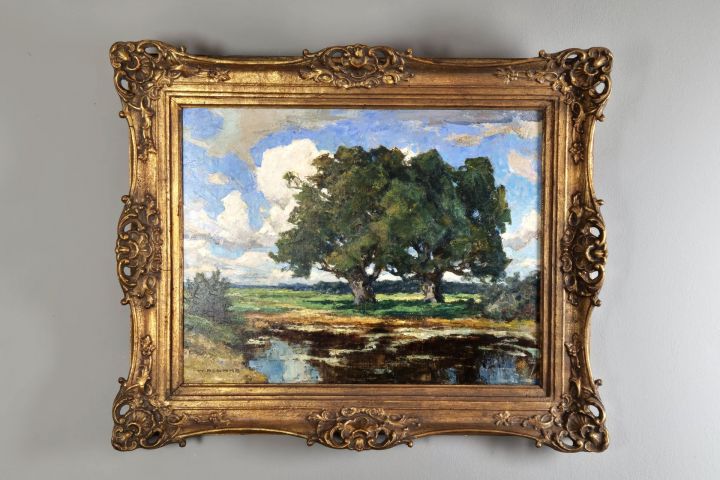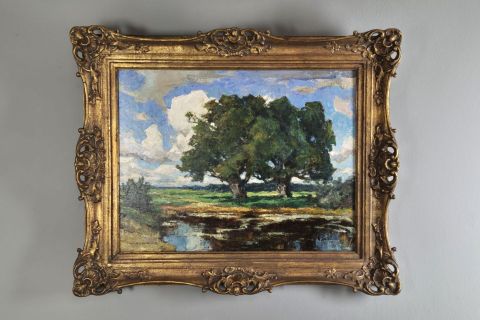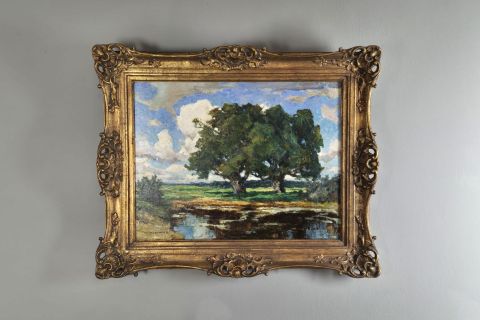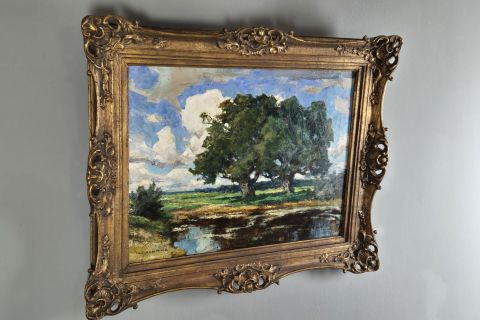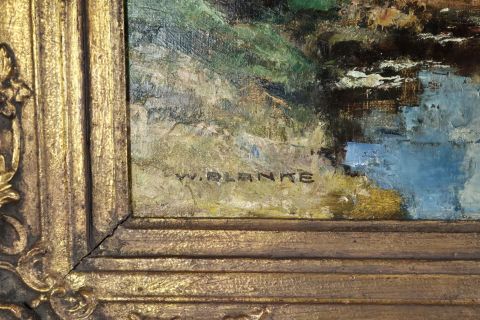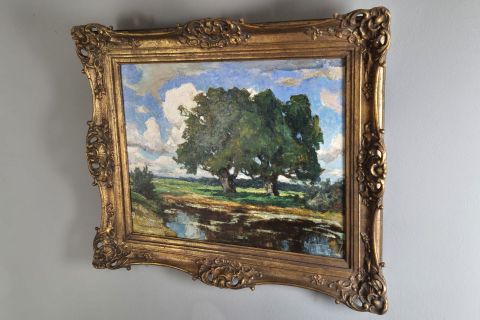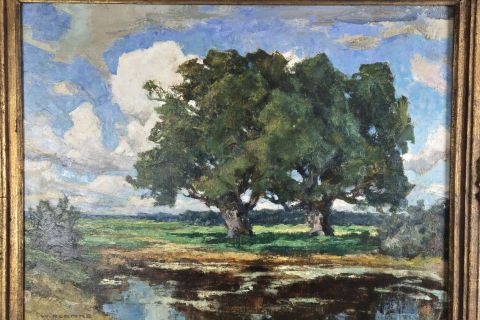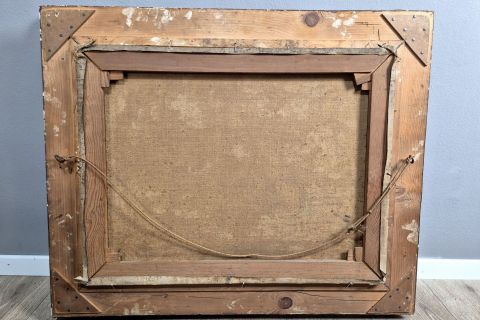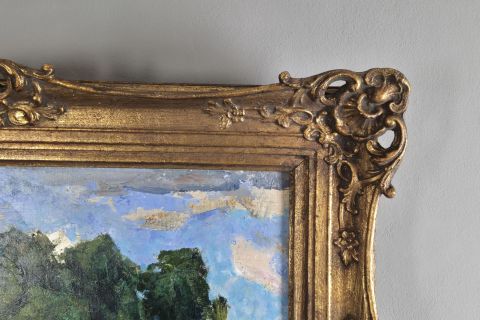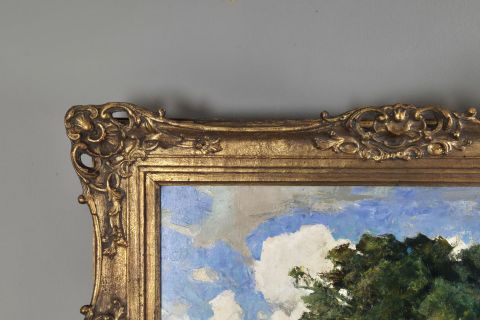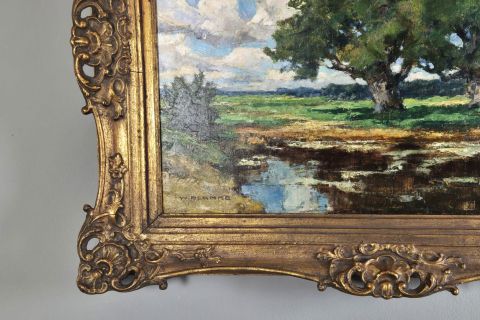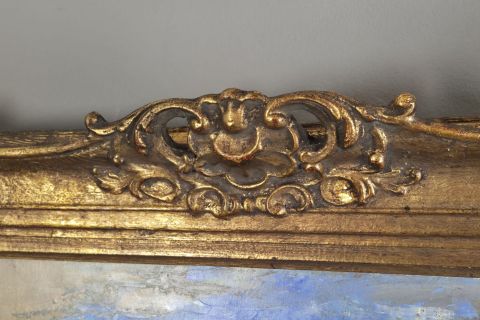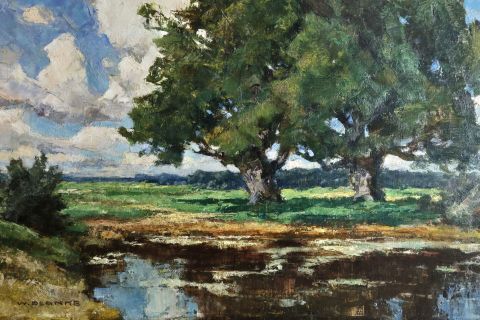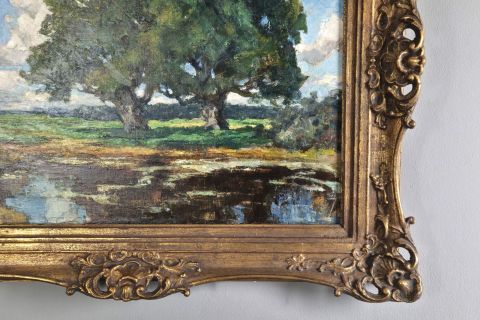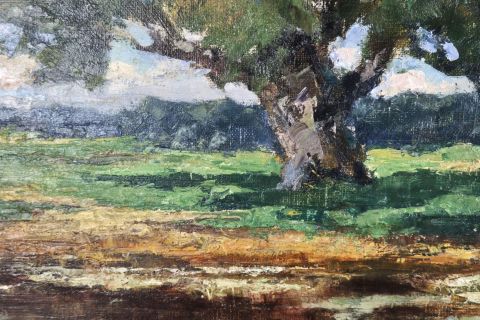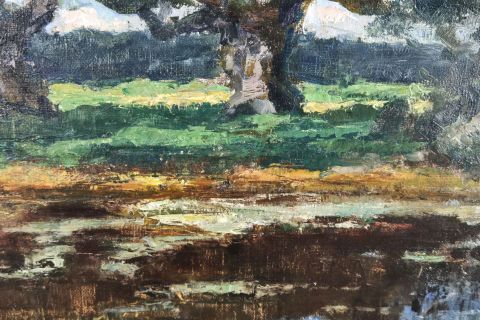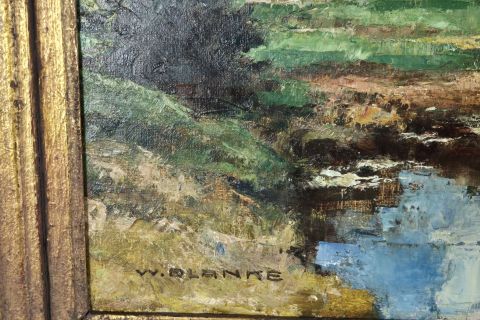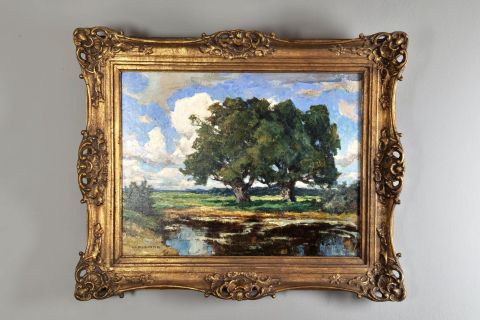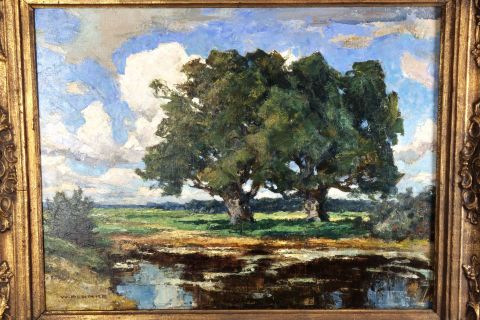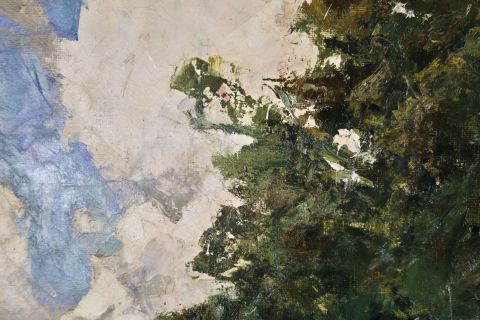Born March 11, 1873 in Unruhstadt, Bomst district, East Brandenburg.
Died April 16, 1936 in Schwiebus
Quote from Wikipedia:
"Life and work.
Friedrich Wilhelm Blanke was born as the youngest child of Johanna Karoline (née Neumann) and Ernst Johann Blanke. After his school days, he was trained as a decorative painter by his eldest brother Ernst. After completing his apprenticeship in 1890, he went to Berlin to work in his profession. From 1892 to 1894, he undertook a two-year study tour through Europe's art metropolises as far as Italy. He then settled in Steglitz near Berlin and tried to gain recognition as an autodidact painter.
In March 1901, he married Anna Graf, the eldest daughter of the painter and court photographer Heinrich Graf, and in December 1901 their son Heinz (Henry) was born.
At the beginning of his career, Wilhelm Blanke was still attached to the academic style of painting, which he mastered without an academy education, but he began early on, he began to deal with the different views of painting and found his ideal means of expression in the impressionist-influenced style of painting.
Willhelm Blanke was a very versatile painter. In the forty years that he lived in Berlin-Steglitz, he created an extensive oeuvre. He found many of his motifs in nature. The austere landscapes and colorful floral pieces, but also the depiction of religious themes or the interiors - all of the paintings convey great talent and skill and show his quality as a great colorist.
He was close friends with well-known Berlin painters, especially with the followers of a moderate Berlin Impressionism, Carl Kayser-Eichberg being mentioned here as an example. Similarities in Wilhelm Blanke's work with the style of the Bracht School are therefore not accidental. There are also many similarities with his brother-in-law, the painter Gerhard Graf.
Highly honored on his 60th birthday in 1933, Wilhelm Blanke soon left Berlin-Steglitz to escape the political upheavals and changes in the capital's art scene in his birthplace of Unruhstadt. On April 16, 1936, Wilhelm Blanke died after a short illness in the hospital in the district town of Schwiebus.
From 1902 to 1934 he took part in the annual exhibitions of the Great Berlin Art Exhibition, and he also sent his works to other important exhibitions, not only in Berlin. Solo exhibitions are recorded, for example, in the Eduard Schulte Gallery, Berlin in 1922, in the Berlin Artists' Guild, 1930, and in the Scherlhaus, Berlin in 1931. On his sixtieth birthday in 1933, the Association of Berlin Artists, of which he had been a member since 1912, honored him in a large anniversary exhibition together with his painter friends Carl Kayser-Eichberg, Fritz Geyer, and Julian Klein von Diepold."

